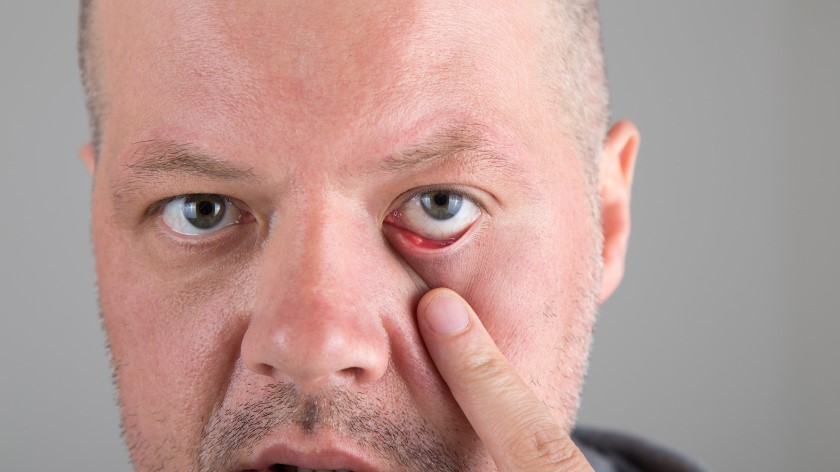Are you dealing with the discomfort of a stye and wondering how to get rid of it? You’re not alone. Styes are a common eye condition that can cause pain, swelling, and irritation. But fear not! In this article, we’ll explore what a stye is, its symptoms and causes, and various methods for diagnosis and treatment. Whether you prefer natural home remedies or medical intervention, we’ve got you covered. So grab your warm compresses and dive into the stye relief world!
What is a Stye?
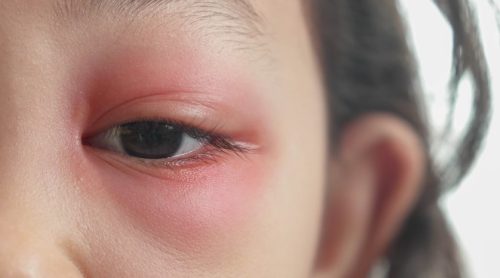
A little, painful bump that develops on the eyelid is called a stye. It occurs when an oil gland or hair follicle becomes infected by bacteria. The affected area may be red, swollen, and tender to the touch. Styes are common and usually resolve independently within a week or two.
Symptoms and Causes
Symptoms of a stye include a red, swollen bump on the eyelid, sensitivity to light, and excessive tearing. The main cause is usually an infection in the eyelid’s hair follicle or oil gland. Poor hygiene, stress, and hormonal changes can also contribute to developing a stye.
Diagnosis and Treatment
Your doctor will examine your eyelid to diagnose a stye and ask about your symptoms. In some cases, they may need to perform additional tests or procedures. Once diagnosed, treatment options include warm compresses, antibiotic ointments, cleaning the eyelid with mild soap and water, over-the-counter pain medication, and avoiding makeup and contact lenses. For severe or persistent styes, it is important to seek medical treatment from your doctor for further evaluation and management.
How is a Stye Diagnosed?
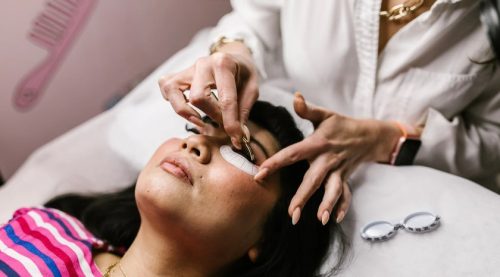
A stye can usually be diagnosed by physically examining the affected eye. The doctor will look for redness, swelling, and a small bump on the eyelid. Occasionally, they could employ a magnifying glass to obtain a closer inspection. No need to worry; it’s a simple and painless process!
How is a Stye Treated?
Treatment for a stye typically involves home remedies and medical interventions. Home treatment options include warm compresses, tea bags, antibiotic ointments, cleaning the eyelid with mild soap and water, taking over-the-counter pain medication, and avoiding makeup or contact lenses. It is advisable to seek medical treatment from a doctor for more severe cases.
How to Get Rid of a Stye through Home Remedies?
- Use a warm compress: Apply a clean compress to the affected area for 10-15 minutes daily to reduce swelling and promote drainage.
- Use a warm tea bag: Place a warm tea bag on the stye for about 5 minutes, as the tannic acid in tea can help soothe inflammation.
- Use antibiotic ointments: Apply over-the-counter ointments as directed by your healthcare provider to prevent infection and aid healing.
- Clean your eyelid with mild soap and water: Clean the affected area using mild soap or baby shampoo diluted in water, then rinse thoroughly.
- Take over-the-counter pain medication: Non-prescription pain relievers like ibuprofen can help alleviate discomfort associated with styes.
- Avoid using makeup and contact lenses: These may irritate the eye further and worsen the stye’s condition.
- Get medical treatment from your doctor if needed: If home remedies don’t provide relief within a few days or if symptoms worsen, consult your healthcare provider for professional guidance and treatment options tailored to your situation.
1. Use a Warm Compress

Using a warm compress is an effective way to treat a stye. Soak a clean washcloth in warm water and gently place it on the affected area for 10-15 minutes, several times daily. The warmth helps reduce inflammation and promotes drainage of the stye.
2. Use a Warm Tea Bag
A warm tea bag is another effective home remedy for removing a stye. The warmth from the tea bag helps to reduce inflammation and promote drainage. Soak a tea bag in warm water, squeeze out any excess liquid, and place it over your closed eye for about 10 minutes. Repeat this process several times a day until the stye heals.
3. Use Antibiotic Ointments
Using antibiotic ointments can help to treat a stye effectively. These ointments contain ingredients that can kill the bacteria causing the infection. Apply a small amount of the ointment directly onto the affected area, not getting it into your eyes. Follow your doctor’s instructions for usage and duration of treatment.
4. Clean Your Eyelid With Mild Soap and Water
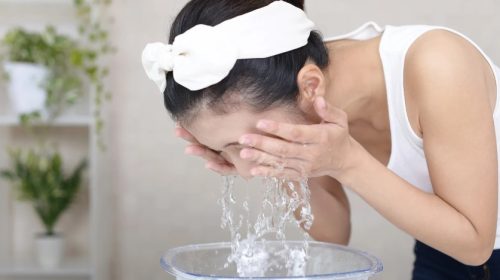
Clean your eyelid with mild soap and water to help remove a stye. Gently wash the affected area, not rubbing or irritating it further. Use a clean cloth or cotton ball soaked in warm, soapy water to cleanse the eyelid gently. This can help remove bacteria or debris contributing to the stye’s formation.
5. Take Over-the-counter Pain Medication
When dealing with the discomfort of a stye, over-the-counter pain medication can provide temporary relief. Non-prescription options such as ibuprofen or acetaminophen can help alleviate pain and reduce inflammation. Following the recommended dosage instructions is important, and consult with a healthcare professional if symptoms persist or worsen.
6. Avoid Using Makeup and Wearing Contact Lenses
Avoid using makeup and wearing contact lenses during a stye outbreak. Makeup can irritate the affected area and worsen the symptoms, while contact lenses can trap bacteria and prolong healing time. Give your eyes a break by going au naturel until the stye disappears completely.
7. Get Medical Treatment From Your Doctor
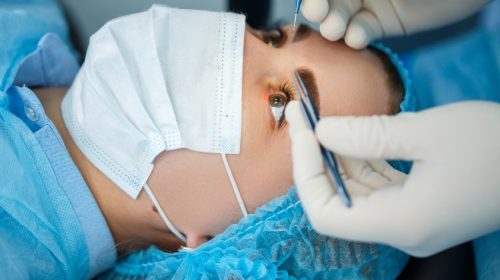
If home remedies don’t provide relief, seeking medical treatment for your stye is important. To help treat the infection, your doctor could recommend antibiotic eye drops or ointments. They may also recommend a minor surgical procedure to drain the stye if it doesn’t improve with other treatments.
Conclusion
A stye can be uncomfortable and unsightly, but you can effectively eliminate it with the right knowledge and treatment options. Prevention is key, so always practice good hygiene by keeping your eyelids clean and avoiding sharing personal items like towels or makeup brushes.
If you develop a stye, try using home remedies such as warm compresses or tea bags to help relieve the symptoms. Additionally, over-the-counter pain medication may provide temporary relief. However, if the stye persists or worsens despite these measures, you must seek medical treatment from your doctor.
Remember that while home remedies can provide relief in some cases, they may not always be enough to eliminate a stubborn stye. It’s essential to consult with a healthcare professional for proper evaluation and guidance.
By following these tips on how to get rid of a stye and seeking appropriate medical care when needed, you can successfully manage this common eye condition. Take care of your eyes and prioritize their health –they are our windows to the world!
FAQs
How long does it take for a stye to go away?
Most styes go away on their own within a few days (3-7) with proper care.
Does stress cause stye?
Stress itself doesn’t directly cause a stye, but it can weaken your immune system, making you more susceptible to bacterial infections.
Is a stye painful?
Styes can be quite tender and painful, especially when touched. You might also experience redness, swelling, and sensitivity to light.
Do any eye drops help with styes?
Over-the-counter artificial tears can help soothe irritation and dryness, but they won’t treat the infection. Don’t use any medicated eye drops without consulting your doctor.

